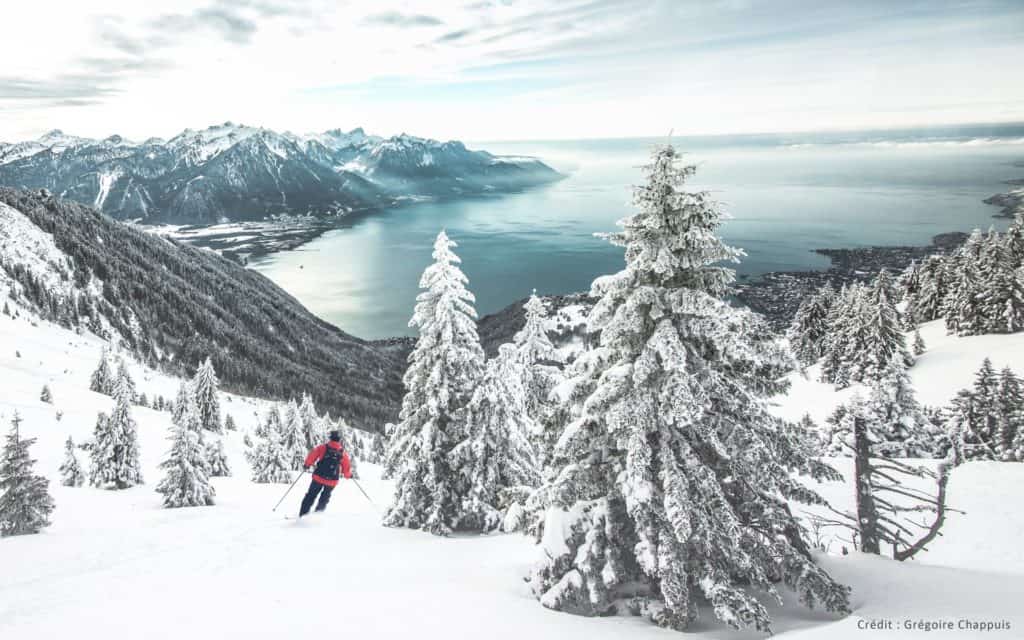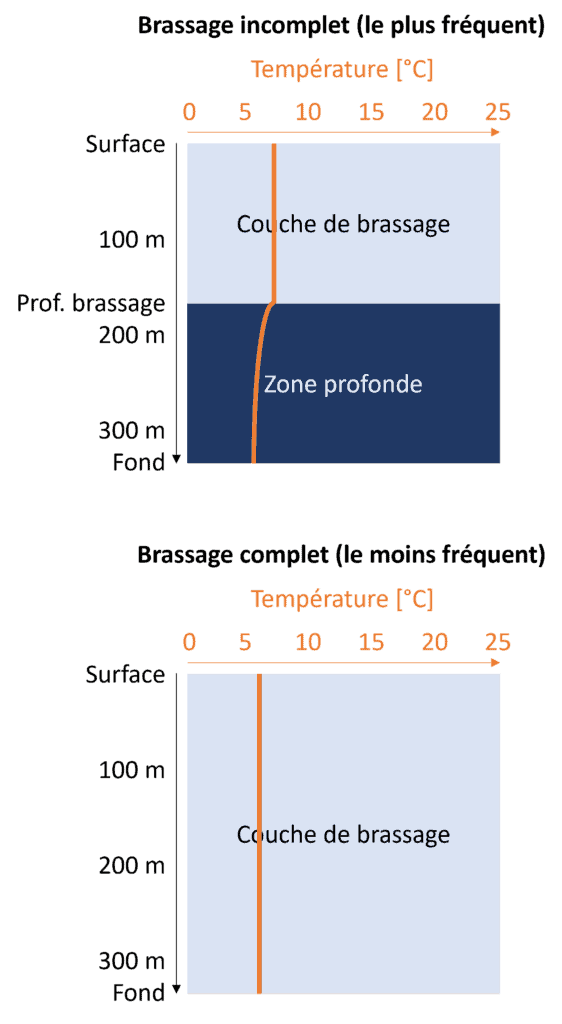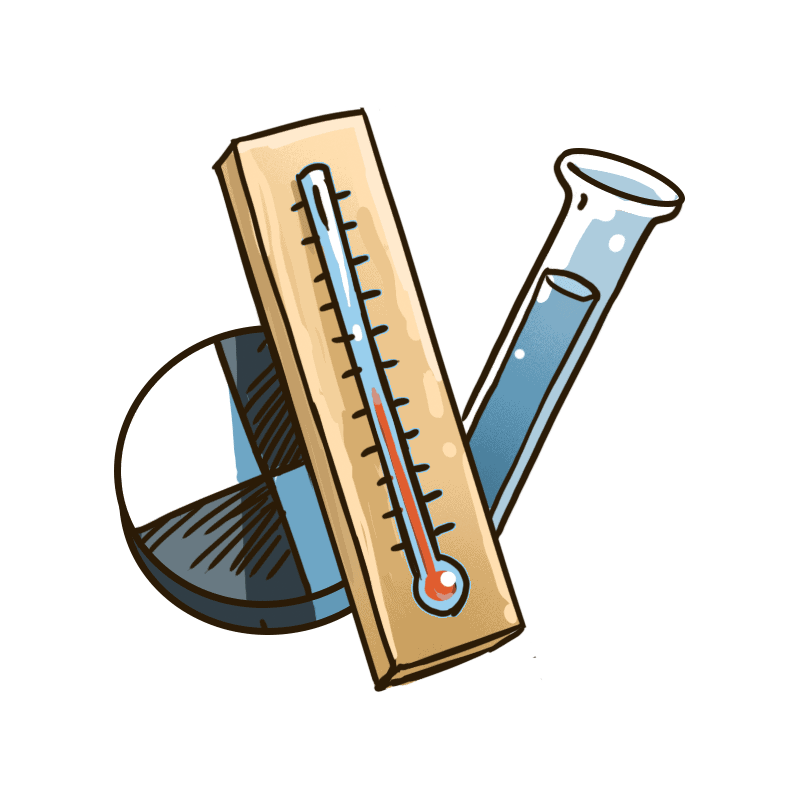Le Léman en hiver
Brassage hivernal et fin du développement algal
En hiver, les campagnes de mesure de qualité des eaux du lac redeviennent mensuelles car le développement des algues en suspension dans l’eau ralentit. De fait, c’est à cette période de l’année que les eaux de surface sont les plus transparentes.
Le brassage hivernal apporte de l’oxygène au lac en mélangeant les eaux de surface, riches en oxygène, aux eaux profondes qui contiennent moins d’oxygène à cause de la décomposition des algues. Dans le cas d’un brassage hivernal complet, le déficit en oxygène est entièrement comblé. Dans le cas d’une répétition de brassages hivernaux incomplets, comme c’est le cas depuis l’hiver 2012-2013, le déficit en oxygène au fond du lac se creuse. Actuellement, le lac manque d’oxygène en profondeur, ce qui entraîne des conséquences néfastes sur la vie aquatique et la libération (relargage) du phosphore ou de certains métaux, qui étaient piégés dans les sédiments.
Le brassage hivernal entraîne aussi la remobilisation vers la surface des nutriments nécessaires au développement des algues (azote et phosphore principalement). Mais le froid, cumulé au faible rayonnement solaire, ne permet pas tout de suite aux algues en suspension dans l’eau de se développer.













